
Exploring the living leaf that breathes, walks, and disappears into nature’s masterpiece
Musa Sattar, London, UK Deputy Science Editor
If you were to walk through the dense green forests of Southeast Asia or parts of Australia, you might step right past one of the most astonishing creatures on Earth and never even know it. Not because it is tiny, not because it moves silently, but because it’s dressed in one of the most perfect disguises nature has ever created. Meet the leaf insect: a walking, living, breathing leaf. Yes, you read that right. Not a leaf with life. An insect that looks so much like a leaf, even the sharpest eyes in the forest are fooled. Birds, reptiles, and even humans pass by it without a second glance. And that’s exactly how it survives.
At first glance, it might seem like magic. But as you look closer, you begin to see something even more profound: design, intention, a hidden genius at work. Every inch of this insect tells a story. Its legs don’t just help it move – they also have tiny veins running along them, just like the veins you’d find in real leaves. Its body has curves and ridges that mimic the exact folds and wrinkles a dry leaf would have after falling from a tree. Some even have small brown spots to imitate decay or damage. And when the wind blows, they sway their bodies gently back and forth, just like a leaf would in the breeze. Not to look cute, but to stay alive. That little movement could mean the difference between being seen by a predator or disappearing in plain sight.
Scientists call this kind of trick ‘camouflage,’ but with leaf insects, it goes much deeper. This isn’t just hiding. This is art. It is performance. It is survival wrapped in elegance. And surprisingly, from the moment it hatches, it’s equipped with all the tools it needs.
There are over 3,000 species of insects that use camouflage, but leaf insects are some of the most celebrated. Belonging to the family Phylliidae, these leaf insects have been studied by scientists for over a hundred years. Despite being part of a larger family, only just over a hundred species of leaf insects have been officially described so far.
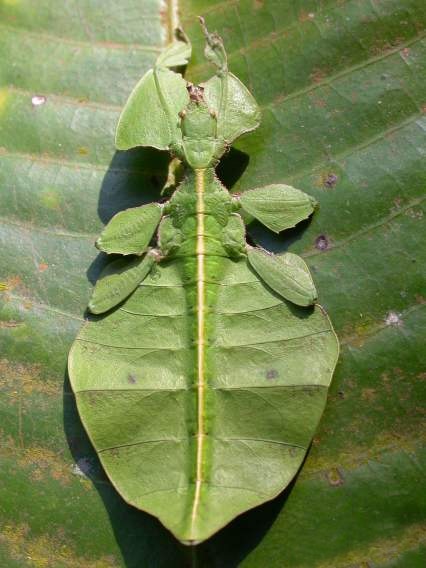
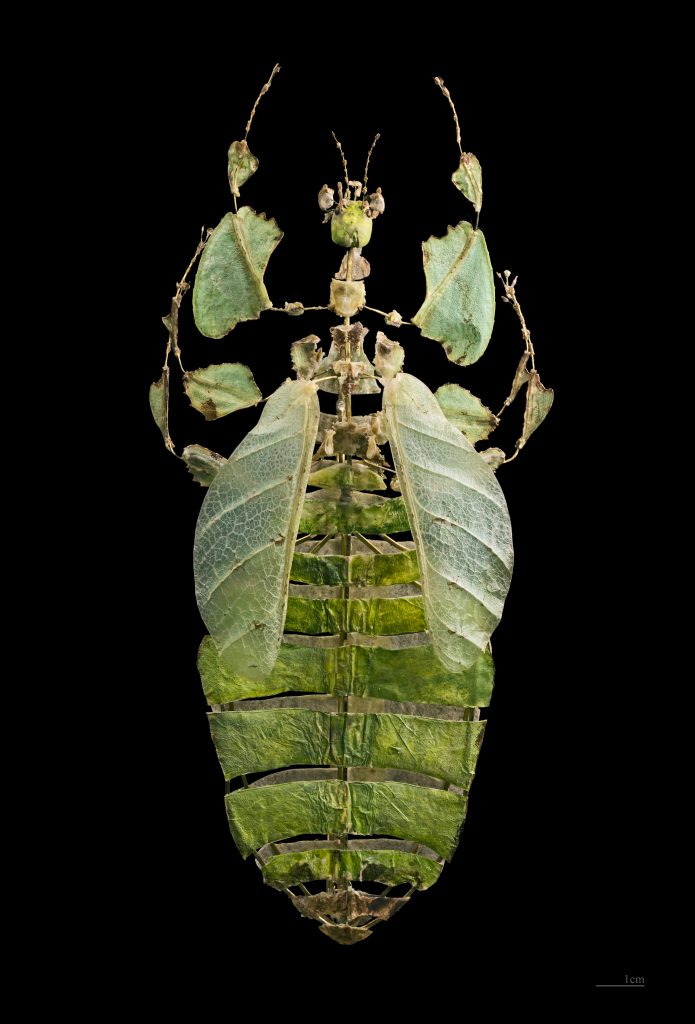
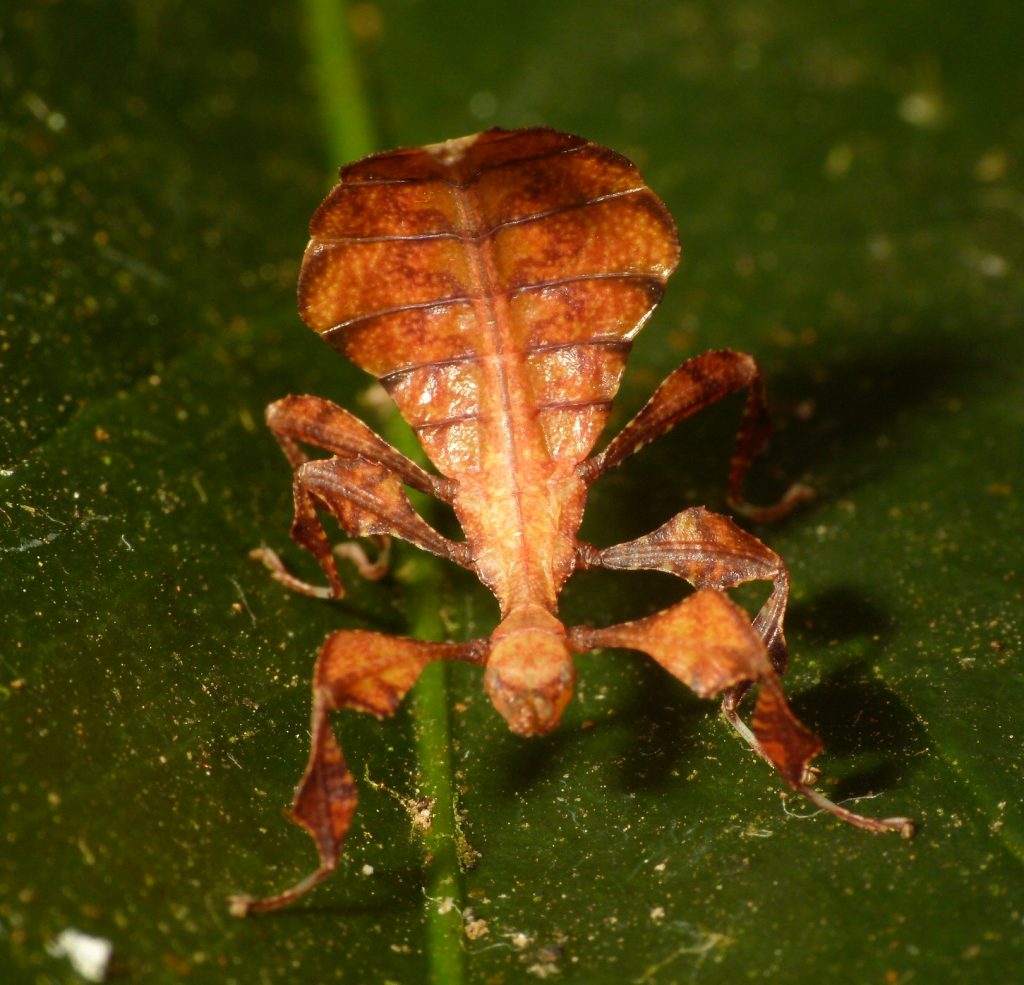
Interestingly, scientists have discovered that this incredible camouflage act is not a recent development, but has actually been unfolding for millions of years. In a remarkable discovery, Dr Sonja Wedmann and her team from the University of Bonn in Germany uncovered the first known fossil of a leaf insect, beautifully preserved in 47 million-year-old sediments. The fossil, belonging to a male, shows clear and intricate details that confirm these creatures have been perfecting their leafy disguise since ancient times.
What’s even more astounding is how little their structure has changed over time, with fossils that look strikingly similar to the leaf insects we see today. This is proof of how such an elaborate design was ingrained within these creatures nearly 50 million years ago.
Yet, their rarity only adds to their charm. As Dr Sven Bradler, an expert who has spent more than 20 years researching these fascinating creatures at the University of Göttingen, notes, ‘They may make up only a small portion of this diverse insect family, but their spectacular and completely unexpected appearance makes them truly unique.’
The female leaf insects can grow up to 12 centimetres long. In contrast, the males are smaller and slenderer and equipped with wings that allow them to fly short distances.
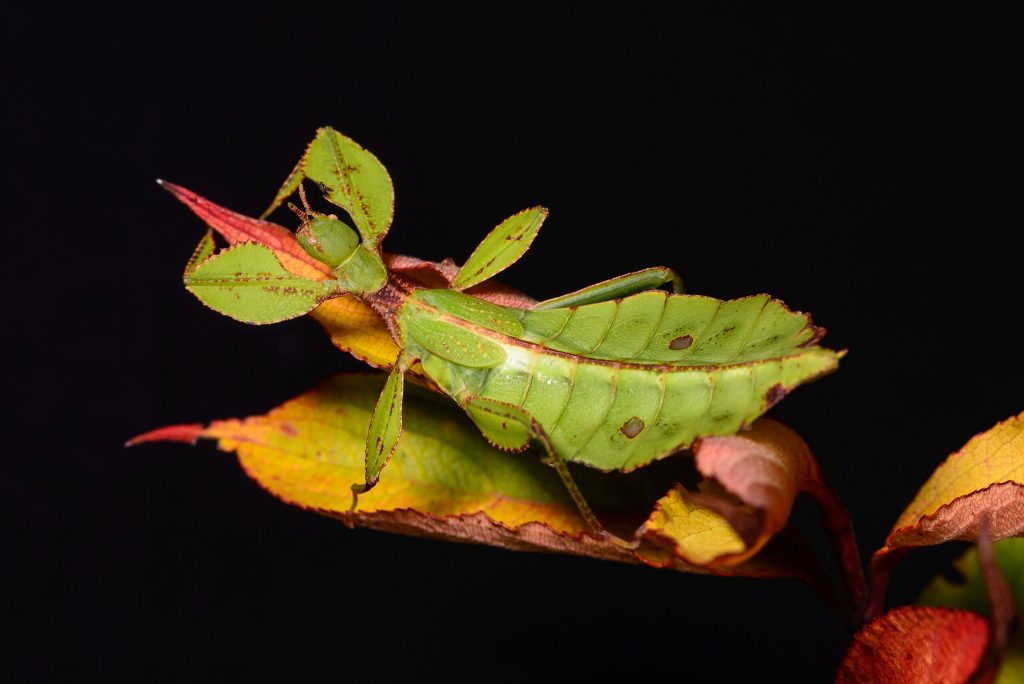
© Ebe.wiki. BY-SA 4.0 International
Their bodies are not only beautiful but incredibly complex. Under a microscope, you’ll find layers upon layers of detail: microscopic hairs, pigment cells, structural adaptations, and more. Their exoskeleton (a hard outer shell that works like armour) doesn’t just protect them. It reflects light in a way that makes their leafy appearance even more believable. Some species are green like fresh spring leaves. Others are brownish-yellow, like fallen autumn foliage. Each one is perfectly matched to the environment it lives in, with some even able to change their colour to adapt to the changing environment around them.
But it’s not just about looks. Leaf insects also play important roles in their ecosystems. They are herbivores, munching on leaves and helping to control the growth of certain plants. At the same time, they are food for birds and lizards, thus continuing the circle of life. Even in death, their tiny bodies feed the soil, giving life to new plants.
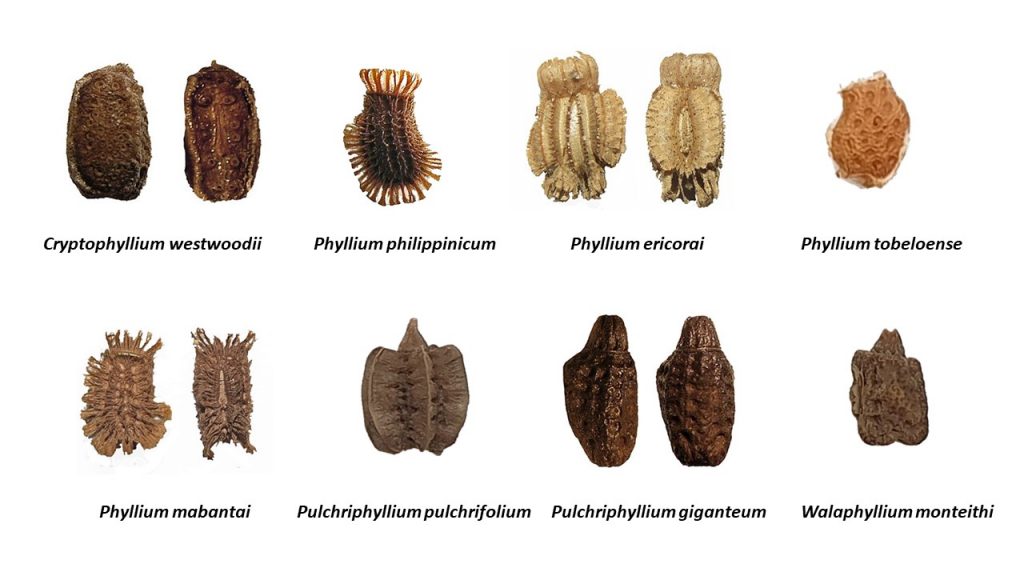
The eggs of eight leaf insect species. Image credit: Wikiedia Commons | Drägü. CC BY-SA 4.0
Their eggs, too, are marvels of design. Tiny and tough, they fall to the forest floor where they look like seeds, but with the pattern of bugs that warn of their distastefulness, enabling them to survive against ants and other hungry creatures. Leaf insect eggs are small and boxy, with straight edges and a surface covered in fine, moss-like textures, giving them a unique, earthy appearance that blends seamlessly into their surroundings.
You might wonder, how does such a tiny creature manage all this? How does it know where to hide, what colour to be, or how to move like a leaf? The truth is, it doesn’t know in the way we understand knowing. It follows a programme written into its body from the very start, a programme more advanced than any software ever built by human hands. One small insect, less than the size of your palm, with a built-in navigation system, a perfect disguise, and a life plan written in its cells. And it doesn’t need to plug in or charge. It just works. Flawlessly. Every single time.
When we reflect on the astonishing precision found in even the smallest of creatures, like the leaf insect, we begin to see something even deeper than design. We see restraint. We see balance. Not just in shape or colour, but in growth, in purpose, in survival itself. Nothing is overdone. Nothing is wasted. Each part, each function, stays within invisible boundaries, performing exactly as it was meant to.
Hazrat Mirza Tahir Ahmad (rh), the Fourth Head of the Ahmadiyya Muslim Community, once beautifully highlighted this truth while contemplating the perfection of life’s systems. He observed that if balance in any organ of a living being were disturbed, it would either grow wildly or fade away completely. Speaking of insects specifically, he pointed out that every single one is designed with precise dimensions. ‘If unchecked by the laws of nature,’ he wrote, ‘they would grow to such gigantic sizes as could fill the earth from end to end.’ But they don’t. Because something holds them back. A system exists that limits and governs them. ‘Balance, or absolute justice in human terminology,’ he continues, ‘is not kept automatically but is imposed and controlled by certain forces.’ And then, with a powerful reminder, he adds: ‘Alas, man is ungrateful. In spite of intelligence, he remains heedless of that Omnipotent Being while every particle of the universe bears witness to His existence!’ [1]
The leaf insect is a perfect witness to that balance. It grows just enough to survive, but not so much that it overwhelms its world. It eats what it needs. It disappears when it must. It lives quietly within its limits. This is not chaos. This is not randomness. This is order. Precision. Justice. The kind that can only come from one who knows both the needs and the consequences of every living thing. The kind that watches over not just stars and planets, but the tiniest wing, the smallest breath, the quietest life camouflaged as a leaf.
This is where science begins to touch the edge of wonder. We can describe how these things happen. We can break them down into genetic codes, chemical signals, environmental responses. But we cannot explain why they happen so perfectly. Why does the structure of a leaf insect mirror its surroundings with such precision that even trained eyes are tricked? Why does its tiny body follow such intelligent patterns without possessing a brain like ours? And why does it matter?
It matters because every time we peel back the layers of nature, we find not chaos, but order.
The leaf insect makes us ask these questions. Its elegance is too loud to ignore. Its functionality too precise to brush off. It lives its quiet life among leaves, unaware that its very existence is a billboard advertising the presence of a Creator – a reminder that there is intelligence behind the curtain.
Think about it. This tiny creature has its own defence system without ever building one. It supports the ecosystem without even knowing what that is. It feeds, survives, protects, and dies, all while blending in so perfectly with its world that it becomes part of the scenery. No factories made it. No blueprints were drawn. Yet it works better than many things we build with all our technology.
There is a verse written in every wing, a design in every leg, a story in every movement. And the author is not silent. He speaks through the whisper of wings and the sway of camouflage. He shows His power in the smallest things. The leaf insect, in all its tiny perfection, is one of His many signatures. A leaf that is not a leaf. A creature that vanishes not by running, but by being. As in the Holy Qur’an God Almighty says, ‘And there is no creature that moves in the earth but it is for Allah to provide it with sustenance. And He knows its lodging and its home. All this is recorded in a clear Book.’ [2]
So next time you see a leaf trembling ever so slightly on the forest floor, look closer. It might be more alive than you think. And it might just be whispering the greatest truth of all, that there is a Creator. Wise. Knowing. Powerful. Who fills the tiniest beings with the greatest of wonders.
ENDNOTES
1. Hazrat Mirza Tahir Ahmad (rh), Absolute Justice, Kindness and Kinship – The Three Creative Principles (Tilford, Surrey: Islam International Publications Ltd., 2008), 101-102.
2. The Holy Qur’an, 11:7.
Further Reading:
Paul D Brock & Thies H Büscher, Stick and Leaf-Insects of the World: Phasmids (NAP Editions, 2022).
https://www.sciencedaily.com/releases/2023/08/230828162413.htm
https://www.nationalgeographic.com/animals/article/phasmids-stick-leaf-insects-eggs-camouflouge
https://www.pnas.org/doi/10.1073/pnas.0606937104
https://royalsocietypublishing.org/doi/10.1098/rsos.201689
https://phys.org/news/2023-08-curious-cryptic-leaf-insects.html
https://www.nature.com/articles/s42003-021-02436-z
https://www.bbc.co.uk/iplayer/episode/b00nxks3/life-6-insects




Add Comment